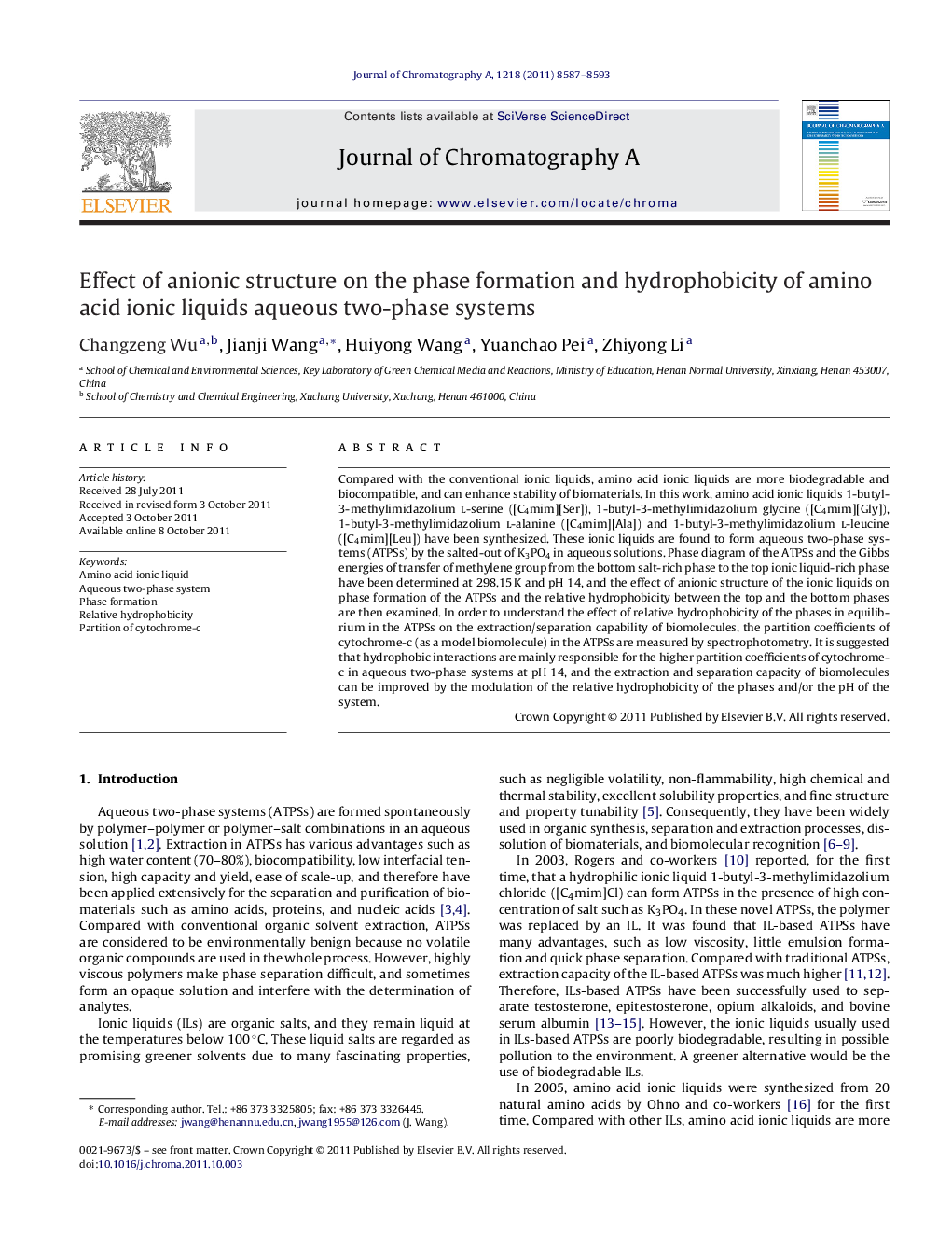| Article ID | Journal | Published Year | Pages | File Type |
|---|---|---|---|---|
| 1203358 | Journal of Chromatography A | 2011 | 7 Pages |
Compared with the conventional ionic liquids, amino acid ionic liquids are more biodegradable and biocompatible, and can enhance stability of biomaterials. In this work, amino acid ionic liquids 1-butyl-3-methylimidazolium l-serine ([C4mim][Ser]), 1-butyl-3-methylimidazolium glycine ([C4mim][Gly]), 1-butyl-3-methylimidazolium l-alanine ([C4mim][Ala]) and 1-butyl-3-methylimidazolium l-leucine ([C4mim][Leu]) have been synthesized. These ionic liquids are found to form aqueous two-phase systems (ATPSs) by the salted-out of K3PO4 in aqueous solutions. Phase diagram of the ATPSs and the Gibbs energies of transfer of methylene group from the bottom salt-rich phase to the top ionic liquid-rich phase have been determined at 298.15 K and pH 14, and the effect of anionic structure of the ionic liquids on phase formation of the ATPSs and the relative hydrophobicity between the top and the bottom phases are then examined. In order to understand the effect of relative hydrophobicity of the phases in equilibrium in the ATPSs on the extraction/separation capability of biomolecules, the partition coefficients of cytochrome-c (as a model biomolecule) in the ATPSs are measured by spectrophotometry. It is suggested that hydrophobic interactions are mainly responsible for the higher partition coefficients of cytochrome-c in aqueous two-phase systems at pH 14, and the extraction and separation capacity of biomolecules can be improved by the modulation of the relative hydrophobicity of the phases and/or the pH of the system.
► Phase formation ability of the amino acid ionic liquids increases with increasing hodrophobicity of anions of the ionic liquids. ► Relative hydrophobicity of the two phases in the ATPSs is determined by anionic structure of the ionic liquids. ► Hydrophobic interaction is the main driving force for the partitioning of cytochrome-c in the ATPSs. ► The partition coefficients of cytochrome-c increase with the increase of system pH.
